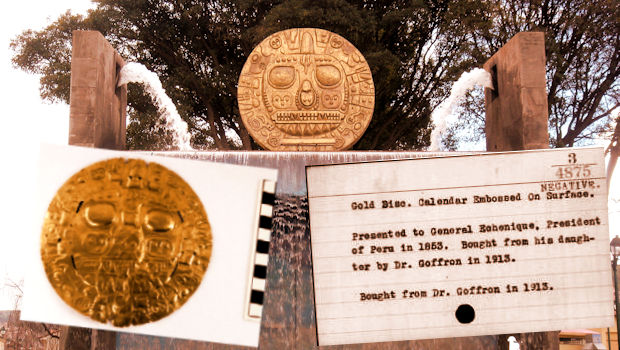
The Inca Sun of Suns Could be Returned to Cusco – by Donald Trump?
[Originally published September 21, 2017] The ancient Inca emblem known as the “Sun of Suns” looms large on the principal avenues and government buildings throughout Cusco.
But the actual golden relic upon which it is based is millimeters thin, measures less than 6 inches round, and has, for more than a century, been in the permanent collection of the Smithsonian’s National Museum of the American Indian.
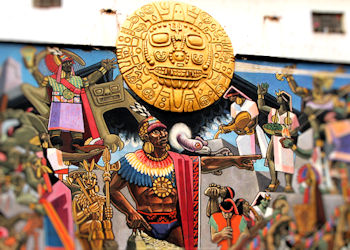
But maybe not for much longer.
The Sun of Suns could be repatriated from the United States in April 2018, Mayor Carlos Moscoso Perea told reporters last week. None other than President Donald Trump himself could deliver it to Peru President Pedro Pablo Kuczynski, he said.
Moscoso said the paperwork has already begun, and a commitment exists between Peru’s foreign ministry, the Smithsonian and the U.S. government to deliver the golden plaque to Peru, on loan for 20 years.
“As to who could be the bearer,” Moscoso said, “it could be the very same president of the United States in the month of April, taking advantage of the Summit of the Americas.”
The emblem goes by several names: Intiq Inti, Sun of Echenique, the Plaque of Echenique, etc.
“For cusqueños it is their symbol of patriotism,” Moscoso said. Cusco’s city council decreed in 1986 that the “plate of Echenique” should replace a Spanish Coat of Arms to shrug off the “ominous” pall of centuries-old Spanish oppression. Giant replicas of the Inca emblem are now ubiquitous.
The history of the Sun of Suns is a tale of idle plunder by Peru’s ruling elite and a host of foreign explorers and antiquities peddlers.
Historian Stefanie Gänger touches on it in her book Relics of the Past: The Collecting and Study of Pre-Columbian Antiquities in Peru and Chile, 1837 – 1911.
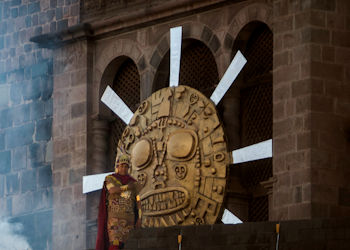
By the mid-19th century “the display of antiquities in parlors and salons was confined to the highest strata of Lima society,” she writes. “To own and to display antiquities, to bring them out and show them to one’s guests after dinner, appears to have constituted an element of elite sociability in the city of Lima.”
It was during one such evening on October 25, 1853, that English geographer, explorer, and writer Clements R. Markham attended a dinner party graced with the presence of Peruvian President José Rufino Echenique.
“Echenique ‘very good-naturedly brought with him some golden ornaments of the Inca period, recently arrived from Cuzco’, among them a breastplate ‘worn by the Inca’, ‘the head of an ornamental pin or topu, worn by the coya or wife of the Inca’, and three flat pieces of gold, which Markham explained represented ‘the leaves out of the Golden Garden of the Incas.'”
Markham would later write about how he “made a copy of the golden breastplate and of the topu.“
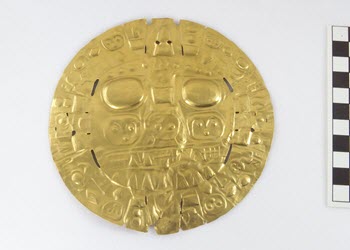
“The Señora Grimanesa Cote, the most beautiful lady in Lima at the time, held the tracing paper while I made the copy. It was very thin, and the figures were stamped, being convex on the outer side and concave on the inner. The outer diameter was five and â…œ inches, the inner 4 inches. This is by far the most interesting relic of the Incas that is known to us.”
Seven years later, Markham’s contemporary, William Bollaert, a writer, chemist, geographer, and ethnologist, interpreted the sketch, declaring the relic to possibly be “an incarial lunar calendar or a zodiac.”
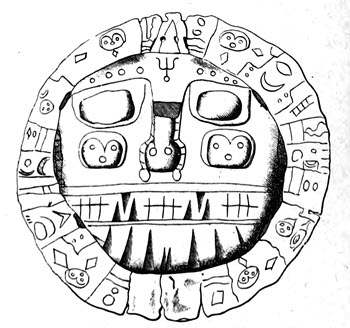
After President Echenique’s death, his daughter sold the piece in 1912 to Dr. Eduard Gaffron, a German ophthalmologist and antiquities dealer who came to Lima in 1892. He in turn sold it a year later to George Gustav Heye, the collector of Native American artifacts, whose collection became the core of the National Museum of the American Indian.
Until it is returned, the Inca Sun of Suns can be viewed at the National Museum of the American Indian in Washington D.C. It remains on exhibit in the 1491 section in the “Our Peoples” gallery on the 4th floor.
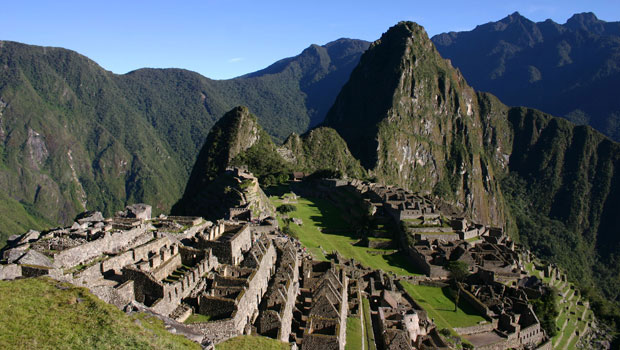 Machu Picchu visitor entry in two shifts set to begin this month
Machu Picchu visitor entry in two shifts set to begin this month 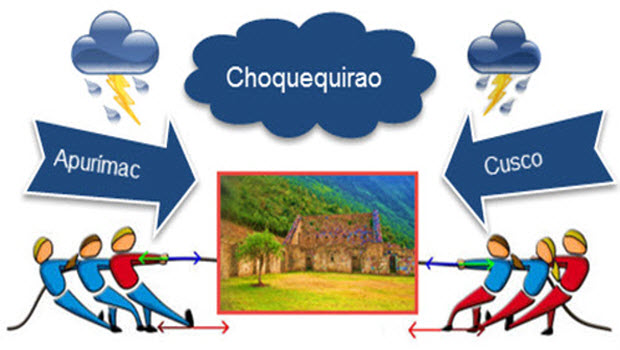 Cusco wants in on Choquequirao Cable Car action
Cusco wants in on Choquequirao Cable Car action 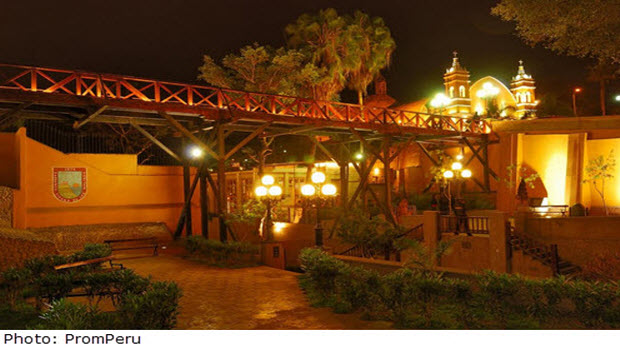 Barranco’s Bridge of Sighs to undergo makeover
Barranco’s Bridge of Sighs to undergo makeover  Design of new visitor complex entrance chosen for Machu Picchu
Design of new visitor complex entrance chosen for Machu Picchu  Fertur Peru Travel celebrates 20th year serving travelers
Fertur Peru Travel celebrates 20th year serving travelers  Antonio Banderas’ tribute to the Inca Trail, Machu Picchu & Peruvian friends
Antonio Banderas’ tribute to the Inca Trail, Machu Picchu & Peruvian friends
Wonderful news. Thank you for keeping me so well informed about Peru. Best wishes, Linda